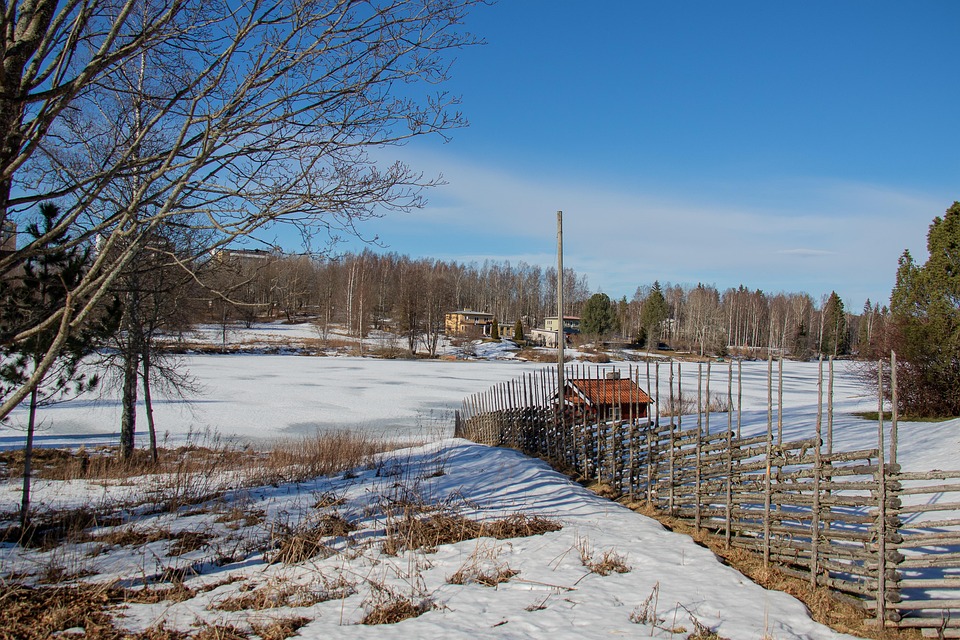# 10 Engaging Headline Suggestions for Articles About Sustainable Agriculture
When I first implemented sustainable farming techniques in my little patch of earth, I remember standing in my garden, the sun warming my back, and feeling a delightful sense of harmony. Everything felt right—not just in the way the plants thrived, but in the sense of interconnectedness that blossomed all around me. Birds flitted above, pollinators hovered nearby, and the soil seemed to pulse with life. It was in this vibrant ecosystem that the magic of sustainable agriculture truly revealed itself. If you’re looking to delve into this fulfilling world, here are some creative headlines to inspire your writing, along with insights that will spark enthusiasm for sustainable farming!
## 1. “Get Your Hands Dirty: The Vibrant Colors of Sustainable Farming”
*Explore how colorful crops not only enhance our plates but also promote biodiversity in our gardens.*
## 2. “Zero Waste, Maximum Flavor: The Beauty of Sustainable Practices”
*Learn how a zero-waste philosophy in farming can elevate the taste of your produce while caring for the Earth.*
## 3. “The Bees Knees: How Pollinators Save Our Gardens (and Our Future!)”
*Discover how to attract and maintain a thriving community of pollinators, ensuring a healthy harvest all season long.*
## 4. “From Scraps to Soil: The Art of Composting in Sustainable Agriculture”
*Unlock the secrets to transforming kitchen scraps into nutrient-rich soil that will supercharge your garden.*
## 5. “The Power of Permaculture: Designing Your Dream Sustainable Garden”
*Delve into permaculture principles and how they can create self-sustaining ecosystems in your backyard.*
## 6. “Growing Together: Building Community Through Urban Agriculture”
*Explore the benefits of urban gardens and how they can strengthen community ties while promoting sustainable practices.*
## 7. “Rooftop Gardens: The Sky’s the Limit for Sustainable City Farming”
*Uncover the unique opportunities of rooftop gardens in urban spaces and their role in sustainable food production.*
## 8. “Dive into Aquaponics: Merging Fish Farming with Plant Cultivation”
*Learn how aquaponics systems can revolutionize sustainable farming and offer a dual source of nutrition.*
## 9. “Heirloom Seeds: Growing Diversity for a Resilient Future”
*Celebrate the beauty of heirloom varieties and their essential role in preserving agricultural biodiversity.*
## 10. “Nature’s Pest Control: Embracing Beneficial Insects for Healthy Plants”
*Find out how friendly bugs can safeguard your garden while reducing the need for chemical pesticides.*
—
### Embracing Sustainable Agriculture: More Than Just a Trend
When you dig deep into the flourishing world of sustainable agriculture, you’ll find it’s about so much more than just putting seeds in the ground. It radiates through every aspect of life—community, wellbeing, and the health of our planet. While conventional farming often aims at maximizing yields, sustainable practices harmonize with the natural ecosystem, recognizing the intrinsic value of each element involved.
Imagine this: you step outside, and instead of the throbbing chaos of conventional life, you experience the tranquil symphony of nature. It’s about understanding the intricate web of relationships that keeps everything in balance—the plants, the animals, the soil, and even the atmosphere.
### The Importance of Healthy Soil
Healthy soil is the foundation of sustainable agriculture, and it’s not just dirt beneath your feet; it’s a living organism. Rich in nutrients, microorganisms, and organic matter, healthy soil fosters robust plant growth while sequestering carbon and filtering water. Here’s how to cultivate thriving soil:
1. **Practice No-Till Gardening**: Disturbing the soil disrupts the ecosystem. By leaving the soil intact, you allow beneficial organisms to flourish.
2. **Incorporate Green Manures and Cover Crops**: Planting cover crops, like clover or rye, improves soil structure and prevents erosion during off-seasons.
3. **Regular Composting**: Incorporate compost regularly to enrich the soil, returning vital nutrients and enhancing biodiversity.
### Water Wisely: Harnessing Nature’s Resources
Water management is crucial in sustainable agriculture. It’s essential not just to conserve water but to use it efficiently. Here are some strategies that can help:
– **Rainwater Harvesting**: Installing barrels to catch rainwater not only helps cultivate plants but also minimizes wastewater runoff.
– **Drip Irrigation**: Adopting a drip irrigation system reduces water waste and directly nourishes plant roots.
– **Mulching**: Applying a layer of organic material around plants helps retain moisture, suppress weeds, and regulate soil temperature.
### Pollinators: The Unsung Heroes
Pollinators are integral to sustainable agriculture’s success. They’re the lifeblood of our ecosystems, ensuring the propagation of plants. Enhancing your garden’s appeal to these vital insects is a rewarding endeavor:
– **Diversify Plant Choices**: Choose a variety of flowering plants to bloom at different times, providing a continuous food source.
– **Avoid Pesticides**: Instead of harmful chemicals, utilize organic methods like companion planting to deter pests naturally.
– **Create Habitats**: Leave some areas wild; bees and other pollinators thrive in natural settings. Small hedges and native wildflowers can create inviting sanctuaries.
### Pro Tips for the Sustainable Gardener
1. **Start Small**: If you’re new to sustainable farming, begin with a small garden—or even container gardening—before expanding.
2. **Connect with Your Community**: Join local gardening groups to share resources, seeds, and knowledge.
3. **Embrace Heirloom Varieties**: They’re often better suited to local climates and may offer unique flavors that hybrid varieties lack.
4. **Grow Your Knowledge**: Attend workshops, read books, and learn from successful sustainable farmers to continually refine your practices.
5. **Make Peace with Imperfection**: Nature is beautiful in all its forms—embrace the organic look and quirks of your plants!
### Agricultural Technologies for Future Sustainability
Advancements in technology can also meet the eco-friendly ethos of sustainable agriculture. Consider these innovative approaches:
– **Solar-Powered Water Pumps**: Efficient and environmentally friendly, these can help manage water in remote areas.
– **Mobile Apps for Monitoring**: Technology can aid in tracking weather, soil conditions, and crop health through easy-to-use mobile applications.
– **Hydroponic Systems**: Soil-less growing techniques can optimize space, reduce water usage, and provide fresh produce all year round.
### Conclusion: Cultivating a Sustainable Future
Engaging in sustainable agriculture isn’t just beneficial for you and your garden—it’s a commitment to the planet and future generations. Every seed planted, every drop of water saved, and every community connection made contributes to a brighter, healthier world.
Sustainable farming practices not only promote biodiversity but are also an opportunity for personal connection and joy. By choosing to cultivate the earth with intention, we foster a life that thrives in harmony with nature—a true reflection of love for our planet.
As you set out on your sustainable agriculture journey, remember that every small step makes a difference. Whether you’re growing tomatoes on your balcony or helping to develop an urban community garden, you are part of something beautiful, vital, and transformative. So, roll up those sleeves, dive into the soil, and let the adventure begin!



